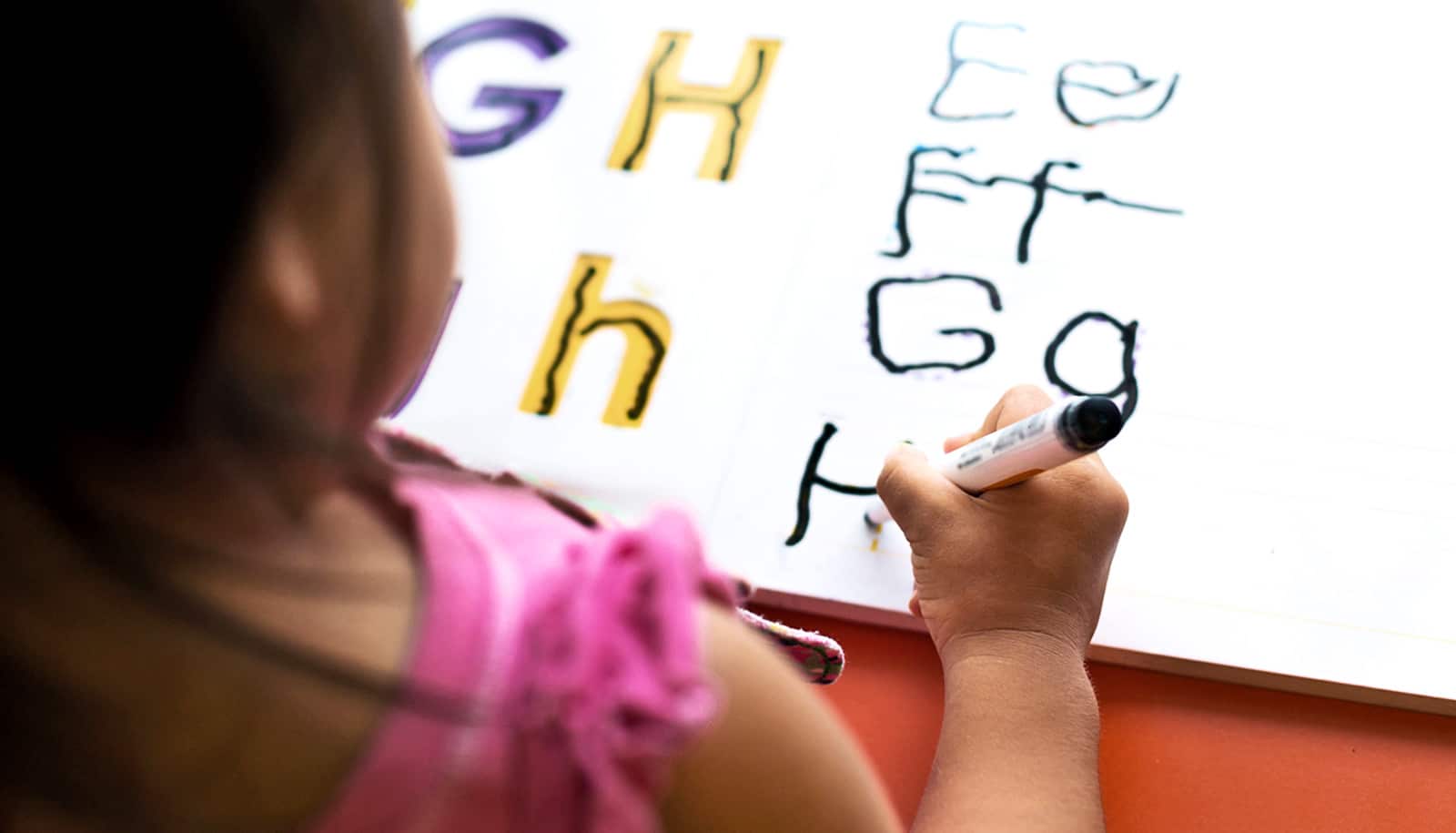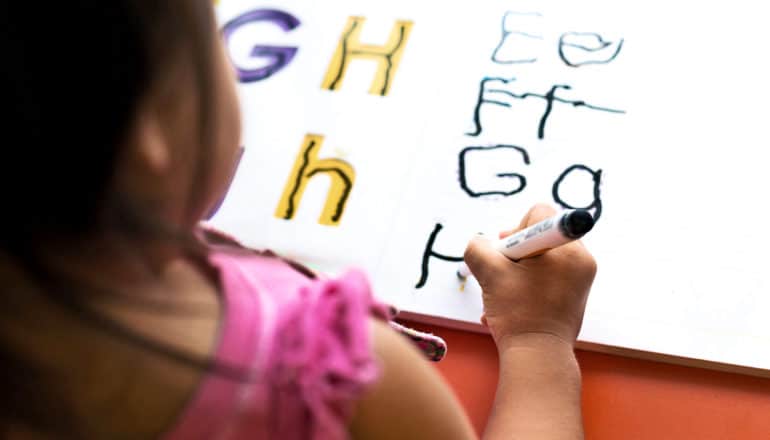
(Credit: Getty Images )
Preschool writing education could use some edits
Preschool writing education is mostly about handwriting and letter formation, but teachers may be missing a chance to focus on communication skills.

Preschool teachers don’t often encourage writing for communication purposes, according to a new study.
The researchers argue that writing instruction in early education should be about more than letter formation and penmanship.
“Few teachers in this study think about writing as communication,” says Hope Gerde, associate professor in the human development and family studies department at Michigan State University.
“However, all children have ideas, and when we allow young children to communicate their ideas using whatever type of ‘writing’ they can produce—whether it’s scribbles, drawing, or letter-like formations—writing is an age-appropriate and engaging endeavor.”
What teachers think
There’s been little research on how preschool teachers view writing in early education, including child interest and enjoyment, she says. But it’s important to understand teachers’ beliefs because those beliefs influence instruction. In addition, using writing as a communication tool is an effective way to strengthen writing skills at an early age—which improves academic success.
In the study, published in the Journal of Early Childhood Teacher Education, researchers observed teachers’ material resources and practices to support writing. They then interviewed teachers to ask about beliefs and instruction.
Gerde and Tanya Wright, associate professor in the teacher education department, interviewed 32 preschool teachers from varying programs, such as Head Start and nonprofit child care centers, to determine how they support writing instruction in their classrooms.
They found environmental supports, such as designated writing spaces, were in place in 94% of classrooms. However, while materials were available, there was limited discussion of how teachers taught children to use the materials.
At the same time, only 22% of teachers reported placing writing materials in other classroom areas or allowing children to bring writing materials into play centers. But meaningful opportunities to write exist within children’s play experiences, such as writing a grocery list or taking an order at the classroom restaurant, Gerde says.
A narrow focus for preschool writing
The most widely observed activities reflected a focus on handwriting, such as teachers reminding children to write their names on artwork, writing letters for children to copy, describing the procedure for creating a letter, signing in, and tracing their names.
In addition, researchers found teachers provided few opportunities or activities focused on supporting children to communicate their ideas through composing (journaling, writing a thank-you card) and few classrooms provided evidence of meaningful writing, such as books made as a class or writing a message to a family member.
Teachers agreed that, in general, young children enjoy writing. During interviews, however, teachers reported there is a lack of guidance on teaching children to write in preschool, despite having research-based curricula. In fact, recent work Gerde led identifies that even research-based curricula are uneven in their guidance for supporting early writing.
Since Common Core standards for elementary school students emphasize writing composition, could teachers, who focus primarily on handwriting, be putting preschool students at a disadvantage? Maybe.
“These findings may be particularly useful to teacher education and professional development programs as they consider ways to change preschool teachers’ beliefs and practices for early writing,” Gerde says.
Gary Bingham from Georgia State University also contributed to the study.
Source: Michigan State University
The post Preschool writing education could use some edits appeared first on Futurity.
Share this article:
This article uses material from the Futurity article, and is licenced under a CC BY-SA 4.0 International License. Images, videos and audio are available under their respective licenses.
Related Articles:
Online students ask more questions in ‘HyFlex’ lectures
Sept. 27, 2021 • futurityAccess to quality preschool benefits multiple generations
May 23, 2019 • futurityLinks/images:
- https://www.futurity.org/preschool-teaching-kids-skills-1606582/
- https://www.futurity.org/early-childhood-education-preschool-families-2070062/
- https://doi.org/10.1080/10901027.2019.1593899
- https://www.futurity.org/storytelling-preschoolers-976262/
- https://msutoday.msu.edu/news/2019/should-preschool-writing-be-more-communication-and-less-abcs/
- https://www.futurity.org/preschool-writing-education-2197592/
- https://www.futurity.org


